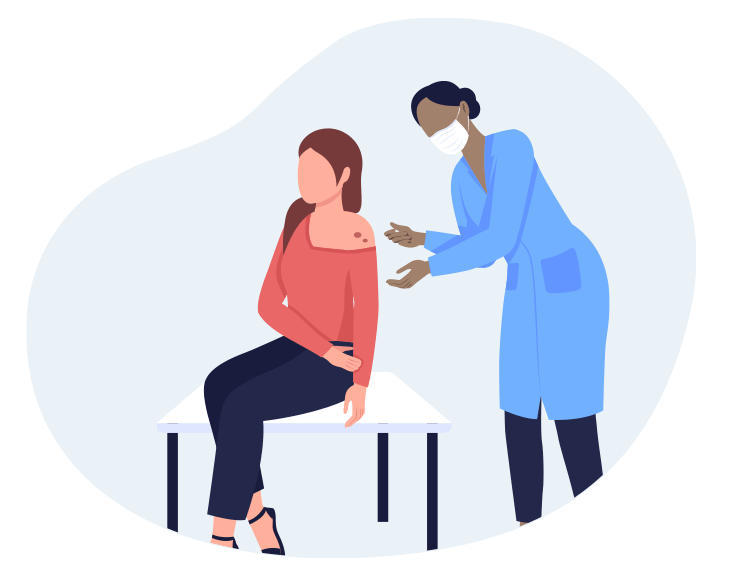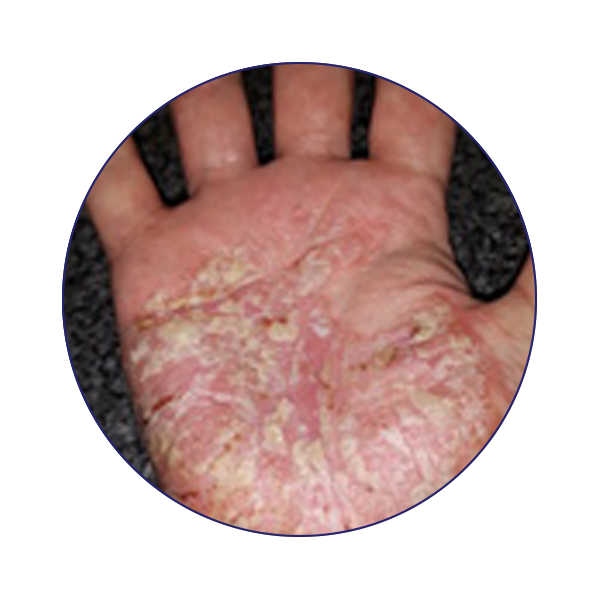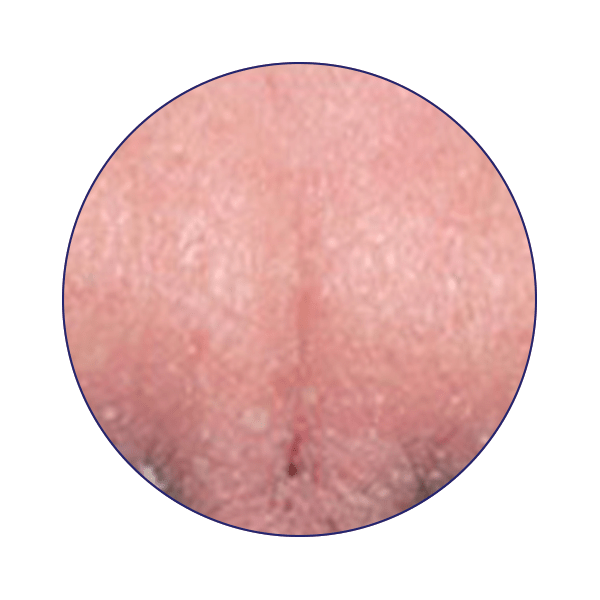
Atopic eczema (scientifically known as atopic dermatitis) is not contagious. You cannot catch it; you are not dirty or infectious. However, it does damage the skin barrier function (our first line of defence from the outside world). This may lead to very dry, itchy skin which in turn, makes you scratch. It may also cause disturbed sleep.
1 in 5 children and 1 in 10 adults in the UK suffer from eczema.1
There are different forms of eczema depending on:
- The triggers
- The symptoms
The treatment and management of these types reflect this. There is no cure for eczema, but there are some great treatments around to manage your symptoms.
Did you know?
Eczema comes from the Greek word “Ekzein” meaning to “bubble through” or “boil over”.
Dermatitis is an inflammation of the skin with ‘derm’ meaning skin and ‘itis’, inflammation.
For severe cases, or if you have any concerns about your condition, please speak to a Healthcare Professional.

Atopic eczema is the most common form. It usually begins in early childhood and can come and go for years or throughout life.
A defect in the skin barrier function leads to inflammation, itching and scaling. In turn this can lead to very dry and infection prone skin.
![Asteotitic_Eczema_Web_WhatisEczema[2]](https://assethub.alliancepharmaceuticals.com/m/d48733f997eca6b/webimage-Asteotitic_Eczema_Web_WhatisEczema-2.png)
Asteototic eczema, also known as eczema craquele, is more common in the older population (since aging skin often loses moisture and is drier).
Asteototic eczema is characterised by dry, rough and scaly skin that resembles ‘crazy paving’.
Normally, this type of eczema is found on the lower legs. It is best to avoid perfumed or fragranced products and excessive heat.
![Pompholyx_Eczema_Web_WhatisEczema[82]](https://assethub.alliancepharmaceuticals.com/m/19161144df04304c/webimage-Pompholyx_Eczema_Web_WhatisEczema-82.png)
Pompholyx eczema, also known as dyshidrotic dermatitis, is a form of eczema that typically affects the palms of the hands and soles of the feet.
This type of eczema is characterised by tiny blisters under the skin which are extremely itchy.
![Discoid_Eczema_Web_WhatisEczema[66]](https://assethub.alliancepharmaceuticals.com/m/4e393ee9eaed3ebe/webimage-Discoid_Eczema_Web_WhatisEczema-66.png)
Discoid eczema is also known as nummular eczema. As the name suggests, this type of eczema tends to have oval (disc like), very dry, itchy or cracked lesions.
The lesions are normally found on the body and limbs. The face and scalp are usually spared
![webimage-613F0564-7B11-49CA-BD1DB2561A9809E2[26]](https://assethub.alliancepharmaceuticals.com/m/655e23a7aebd1d6e/webimage-webimage-613F0564-7B11-49CA-BD1DB2561A9809E2-26.png)
Varicose eczema, also known as gravitational eczema or statis is very common in people with varicose veins.
It is found on the lower legs. Symptoms include itchy, swollen, crusty, dry skin. The legs look very sore and inflamed.
Patients are commonly given antibiotics as it is often confused with cellulitis (a bacterial infection of the inner layers of skin).
In varicose eczema, the patient is generally well with sore, red legs but in cellulitis, they have a high temperature and feel shivery and unwell.

Allergic dermatitis is triggered by an allergic response caused by contact with a substance(s).
Irritant contact eczema (known as contact dermatitis) is caused by something irritating the skin, which is harder to identify. Both types can be very itchy and sore.
If the dermatitis is caused by an allergy, the allergen may be detected via patch testing performed at the local dermatology department. Small amounts of potential allergens are placed on the skin and left on for 48 – 96 hours to see what reactions have occurred.

Seborrhoeic dermatitis can be a frustrating type of eczema that commonly effects the face and scalp, where there is a lot of oil-producing glands.
It is thought that seborrhoeic dermatitis is an inflammatory reaction related to an overgrowth of yeast on the skin surface.
Seborrhoeic dermatitis is characterised by pale red patches with greasy, yellow coloured scales on the surface.
For severe cases, or if you have any concerns about your condition, please speak to a Healthcare Professional.

Atopic eczema is the most common form. It usually begins in early childhood and can come and go for years or throughout life.
A defect in the skin barrier function leads to inflammation, itching and scaling. In turn this can lead to very dry and infection prone skin.
![Asteotitic_Eczema_Web_WhatisEczema[2]](https://assethub.alliancepharmaceuticals.com/m/d48733f997eca6b/webimage-Asteotitic_Eczema_Web_WhatisEczema-2.png)
Asteototic eczema, also known as eczema craquele, is more common in the older population (since aging skin often loses moisture and is drier).
Asteototic eczema is characterised by dry, rough and scaly skin that resembles ‘crazy paving’.
Normally, this type of eczema is found on the lower legs. It is best to avoid perfumed or fragranced products and excessive heat.
![Pompholyx_Eczema_Web_WhatisEczema[82]](https://assethub.alliancepharmaceuticals.com/m/19161144df04304c/webimage-Pompholyx_Eczema_Web_WhatisEczema-82.png)
Pompholyx eczema, also known as dyshidrotic dermatitis, is a form of eczema that typically affects the palms of the hands and soles of the feet.
This type of eczema is characterised by tiny blisters under the skin which are extremely itchy.
![Discoid_Eczema_Web_WhatisEczema[66]](https://assethub.alliancepharmaceuticals.com/m/4e393ee9eaed3ebe/webimage-Discoid_Eczema_Web_WhatisEczema-66.png)
Discoid eczema is also known as nummular eczema. As the name suggests, this type of eczema tends to have oval (disc like), very dry, itchy or cracked lesions.
The lesions are normally found on the body and limbs. The face and scalp are usually spared
![webimage-613F0564-7B11-49CA-BD1DB2561A9809E2[26]](https://assethub.alliancepharmaceuticals.com/m/655e23a7aebd1d6e/webimage-webimage-613F0564-7B11-49CA-BD1DB2561A9809E2-26.png)
Varicose eczema, also known as gravitational eczema or statis is very common in people with varicose veins.
It is found on the lower legs. Symptoms include itchy, swollen, crusty, dry skin. The legs look very sore and inflamed.
Patients are commonly given antibiotics as it is often confused with cellulitis (a bacterial infection of the inner layers of skin).
In varicose eczema, the patient is generally well with sore, red legs but in cellulitis, they have a high temperature and feel shivery and unwell.

Allergic dermatitis is triggered by an allergic response caused by contact with a substance(s).
Irritant contact eczema (known as contact dermatitis) is caused by something irritating the skin, which is harder to identify. Both types can be very itchy and sore.
If the dermatitis is caused by an allergy, the allergen may be detected via patch testing performed at the local dermatology department. Small amounts of potential allergens are placed on the skin and left on for 48 – 96 hours to see what reactions have occurred.

Seborrhoeic dermatitis can be a frustrating type of eczema that commonly effects the face and scalp, where there is a lot of oil-producing glands.
It is thought that seborrhoeic dermatitis is an inflammatory reaction related to an overgrowth of yeast on the skin surface.
Seborrhoeic dermatitis is characterised by pale red patches with greasy, yellow coloured scales on the surface.

Which emollient is right for you?
Look at our different Hydromol formulations to help you manage your symptoms
NEXT SECTION
Living with Eczema
Discover hints & tips to help manage your condition on a daily basis
NEXT SECTION
Treatment Options
Find out more about the different treatment options available.
NEXT SECTION
Parents & Carers
Find out more about how to support your child with their eczema.
NEXT SECTION
Woundcare
Find out more about how emollients can support in the care of vulnerable skin.
NEXT SECTION
The Living with Eczema App
Find out more and how to download.
NEXT SECTION
Useful Links
Check out useful links to help you with your condition.
NEXT SECTION
About Eczema
Find out more about skin and eczema.
NEXT SECTION
Living with Eczema
Discover hints & tips to help manage your condition on a daily basis
NEXT SECTION
Treatment Options
Find out more about the different treatment options available.
NEXT SECTION
Parents & Carers
Find out more about how to support your child with their eczema.
NEXT SECTION
Woundcare
Find out more about how emollients can support in the care of vulnerable skin.
NEXT SECTION
The Living with Eczema App
Find out more and how to download.
NEXT SECTION
Useful Links
Check out useful links to help you with your condition.
NEXT SECTION
About Eczema
Find out more about skin and eczema.
1. National Eczema Society. Information & Advice. https://eczema.org/information-and-advice/. Last accessed April 2023.